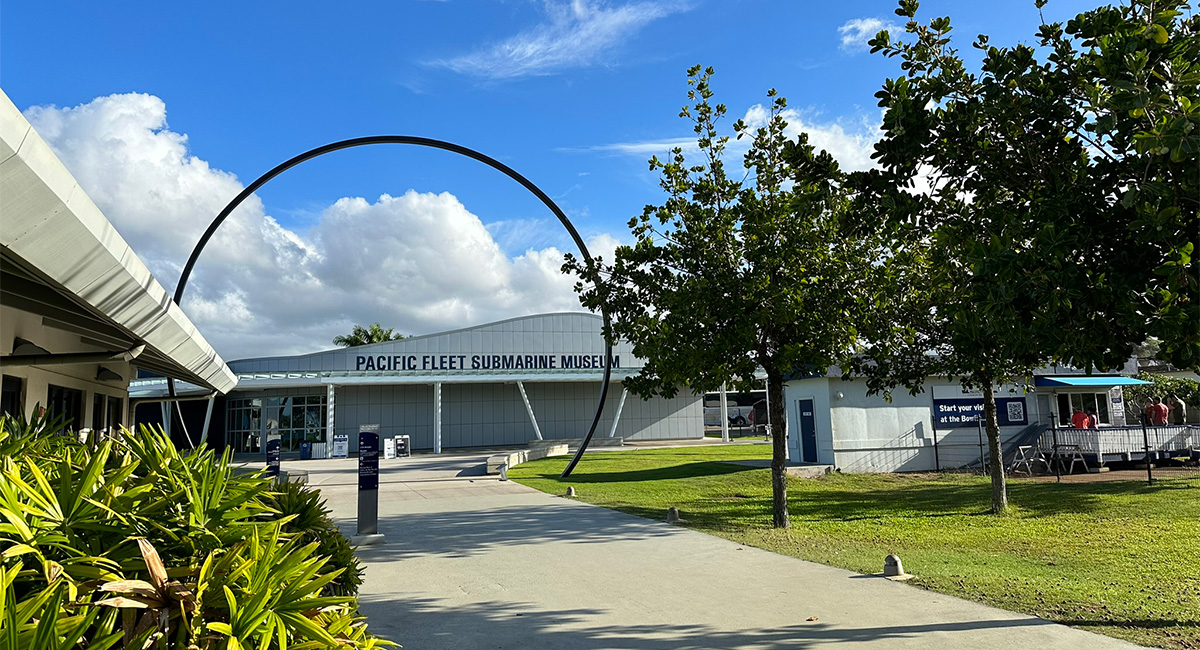







Pearl Harbor Visitor Center
The history of Pearl Harbor resonates with every American. Over the past decade, MIG has been honored to collaborate with this institution, culminating in the new Pearl Harbor Visitor Center, the recent re-opening of the Pacific Fleet Submarine Museum, and a new cultural resource assessment for Ford Island, aiming to preserve the rich cultural history and significance of the site.
Visitor Center. The USS Arizona memorial and Visitor Center in Pearl Harbor are the most popular visitor attractions in Honolulu, solemn recognition of the resting place of thousands of sailors, Marines and civilians. Working with National Park Service, U.S. Navy and Pacific Historic Parks, MIG provided architectural design, site design and conceptual exhibit design. The design maintains the solemnity of the memorial and historic site, while accommodating up to 6,000 daily visitors. It expands visitor gathering areas, allows generous space for ceremonies, welcomes visitors into two museum-quality exhibit galleries, improves visitor amenities, and offers comfortable, renovated theaters for film presentations and orientations. The campus also provides office and meeting space for NPS staff. The buildings are predominately open-air, cooled by natural ventilation as a result of their orientation to the trade winds. The project incorporates extensive sustainable design features, recycled and recyclable materials, and energy-efficient equipment and fixtures, leading to LEED Gold certification.
Pacific Fleet Submarine Museum. The museum highlights the diversity and tenacity of the U.S. submarine force—the “Silent Service”—its importance to national security, and the contributions of elite submariners throughout the last century. Having served more than 9 million guests since its initial opening in 1981, it was time to expand the exhibits, programs and tours—and the stories they tell. The museum now brings the incredible stories of the submarine corps during World War II into the 21st century, while connecting visitors back to decisions and innovations of nearly a century ago. The forward-reaching exhibit technologies are immersive and educational, and offer expanded access to concepts of submarine design, strategy and tactical abilities. The architecture and site design, which reorients the museum entrance to the adjacent Pearl Harbor Visitor Center campus, supports a rich visitor experience for groups as wide-ranging as Pearl Harbor survivors and their descendants, history buffs, tourists and school groups.
